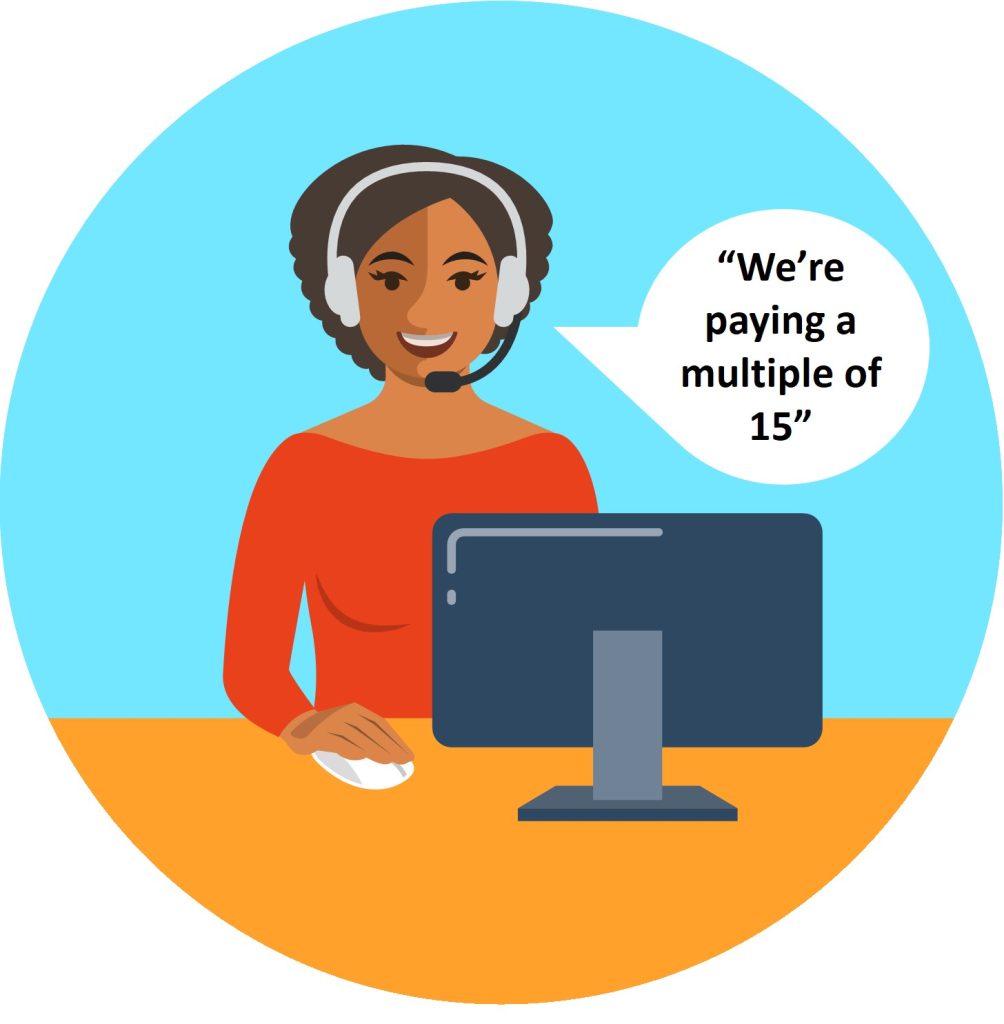Federal Relief Funding for Child Care is Over. Now What?


Across the United States, there’s a patchwork of state child care policies and investments.
In recent years, several states were able to expand eligibility, improve affordability, and make other changes to their child care policies, funded in part by COVID-19 relief dollars. With the expiration of relief funding in September 2024, CCAoA is keeping an eye on changes to state policies. While all states could invest resources in child care and sustain critical policies to support families, providers, and communities, not all are choosing to do so. This blog offers a brief “pulse check” on how states are immediately navigating the end of federal relief funding for child care, and what changes this may bring over the coming months absent additional funding.
The End of Child Care Federal Relief Funding
During the pandemic, child care received $52.5 billion in temporary federal relief funding to help the sector recover and rebuild. The American Rescue Plan Act (ARPA) contributed to the bulk of that funding, providing $24 billion for child care stabilization grants to states and $15 billion in supplemental Child Care and Development Fund (CCDF) discretionary funds, which states were encouraged to use to expand access to high-quality child care and move toward a more equitable system. States could use the ARPA-CCDF funding for any activities and programs allowable under CCDF regulations. Federal guidance strongly urged states to prioritize spending for:
- Increasing provider payments
- Improving payment practices
- Increasing wages for early childhood educators (including family child care providers)
- Building the supply of care for underserved populations
CCAoA tracked state usage of the supplemental ARPA-CCDF funding since 2021 and found that it was used by states in a number of ways, including to increase reimbursement rates, pay based on enrollment, eliminate family copayments, increase subsidy eligibility, and increase compensation through continued stabilization grants or other wage supports.
While states were required to spend the ARPA stabilization grant funding by last fall, states had until September 30, 2024, to spend the remaining ARPA-CCDF funding. Many states exhausted this funding months before the September 2024 deadline, while others planned to use this funding through the end of the last month.
Post-ARPA Changes in States
Now that the last of the supplemental ARPA-CCDF dollars are no longer available for states, CCAoA is monitoring any impacts stemming from this loss of funding. A handful of states recently announced changes to their subsidy program as a result of federal relief funding ending and limited available state funding, and in anticipation of meeting the new federal regulation requirements. These include:
- Arizona: For the first time in over a decade, Arizona’s FY2025 state budget included a state funding increase for child care of $12 million. With this increase in funding, Arizona announced it would be able to increase reimbursement rates for all children to at least the 50th percentile (infants are already set at the 75th percentile) and to continue its enhanced rates for child care providers achieving high quality ratings.
Unfortunately, the budget funding fell short of what Arizona needed to continue serving as many children in its subsidy program as it had during the pandemic using ARPA-CCDF funding. As a result of the shortfall in funding, Arizona reinstated a waitlist for new subsidy applicants on August 1, 2024, the first time it has needed to since 2019. In its FY2025 budget request, the Lead Agency shared that implementing a waitlist is expected to result in an average of 5,200 fewer children being served each month.
- Georgia: The state’s FY2025 budget included $9.3 million to support increased reimbursement rates for the subsidy program, double the amount initially included in the governor’s proposed budget. The new reimbursement rates, which went into effect September 30, 2024, have increased from the 25th percentile to the 60th percentile for full-day care, the largest non-pandemic related increase in the state’s history. On top of that, the state is also funding a quality incentive payment for providers meeting high quality ratings, which will provide a 5-10% quarterly bonus to programs. In 2025, Georgia will implement a new annual Workforce Support Payments ($500/per eligible employee) for providers who are quality-rated.
Georgia, unfortunately, notes in the same document that it faced difficult choice in determining how to allocate fewer dollars with federal relief funds expired, while balancing compliance with new federal regulation changes. To support the new reimbursement rates and the workforce payments, the state reduced its initial eligibility threshold beginning September 1, 2024, which will ultimately result in 22,000 fewer children being served compared to the height of program participation in 2021. Federal relief funding allowed the state to expand subsidy eligibility to as high as 85% of state median income (SMI) in 2021, serving over 72,000 children. The state announced the September 2024 adjustment for initial subsidy income eligibility threshold to 30% SMI— below the pre-pandemic eligibility level of 50% SMI even— with the goal of serving 50,000 children. The threshold for ongoing eligibility, however, will remain at 85% SMI.
- Idaho: Since 2020, the state Lead Agency implemented a series of policy changes to increase reimbursement rates, reduce copayments, and expand eligibility that have resulted in the growth of the state’s subsidy program. With enrollment increasing sharply in FY2024 and in FY2025 so far, the state announced it is anticipating a budget deficit for the child care subsidy program of up to $15 million. To address their forecasted shortfall, in August 2024 Idaho implemented a temporary pause on new enrollment in its subsidy program and announced that it would delay increasing reimbursement rates until July 2025. The state has plans to eventually lower subsidy eligibility from 175% of the federal poverty level (FPL) to 130% FPL when it restarts enrollment, which may impact about 1,000 families. Notably, in June 2023 Idaho’s legislature vetoed an appropriation of over $50 million in remaining ARPA funds, sending back millions in funding to the federal government. Idaho has not allocated any additional increases in state funding for child care.
- Nevada: Effective October 1, 2024, Nevada’s subsidy program is returning to pre-pandemic income and eligibility requirements, reinstating copayments for families, and again maintaining a waitlist for new applicants when the caseload is at full capacity. Beginning in 2022, Nevada has used ARPA-CCDF funds to increase its subsidy eligibility to 85% SMI but has now dropped that threshold to 41% SMI for initial income eligibility. Nevada notes that this change is due to the exhaustion of federal and state pandemic relief funds.
- Oklahoma: Starting on October 1, 2024, the state has fully reinstated copayments because of federal relief funding expiring. Oklahoma initially used federal relief funds to initially cover the full copayments for families, and then between 2023 to 2024 used ARPA-CCDF to limit copayments to 50% of the full amount. Recently, Oklahoma’s Lead Agency proposed emergency rules to address budget concerns and the end of federal relief funding for child care, which included, among other provisions, lowering subsidy eligibility from the current 85% SMI threshold to 70% SMI. The Lead Agency has since withdrawn the proposed rules and announced it will allow more time for public input.
Unlike the states named above, Connecticut just announced it will use existing federal and state funding to expand its subsidy program. Effective this October, Connecticut is increasing the number of families that will be able to remain enrolled in subsidy until their household income reaches 85% SMI, an increase from a limit of 65% SMI. And in January, copayments will drop from 10% to 7% of a family’s household income to meet one of the new CCDF Final Rule requirements. The state is also planning to add 900 new state-funded slots. Connecticut anticipates enrolling an additional 1,500 children in its subsidy system using a combination of existing state and federal funds.
State Decisions: What Gets Funded?
In March 2024, the Administration for Children and Families (ACF) announced new regulatory changes to CCDF. The 2024 CCDF Final Rule includes policies that states are required to implement to lower families’ child care costs, improve child care provider payment rates and practices and simplify subsidy eligibility enrollment. These critical policy changes made to recent federal child are regulations will, over time, make child care more affordable and accessible for more families, while also helping providers stay in business. By August 2026, all states will be required to keep family copayments below 7% of household income, improve payment practices so providers are paid based on their enrollment and in advance of providing services, use grants and contracts to help increase supply and quality, and simplify enrollment in the child care subsidy program.
There are several states already implementing some of these policies required under the new federal regulations, but some states will need to make progress over the next two years to reach compliance. Over the last few years CCAoA has observed states invest additional funding for child care, some even for the first time. Often, these additional state investments have been used to continue policies initially seeded with federal relief funding that are also newly required under the 2024 CCDF Final Rule, like limiting family copayments and paying providers based on enrollment.
Unfortunately, there are also states who haven’t yet committed any additional state funds for child care beyond the federally required levels. Without additional funding, and with federal relief funding for child care now fully expired, it’s possible some states may need to make difficult tradeoffs that will require them to reduce their subsidy caseloads and serve fewer families as they implement the new federal regulation changes. This may look like lowering subsidy eligibility levels or reinstating waitlists, while states implement policies like lower copayments and better payment practices required under the 2024 CCDF Final Rule. In a 2023 survey conducted by the American Public Human Services Association (APHSA), CCDF administrators were asked to reflect on what the end of federal relief funding may mean for their child care subsidy systems. The survey found that as federal relief funding sunsets, Lead Agencies are being faced with making complex funding allocation decisions about what to fund and what to cut in the absences of long-term, sustainable funding. Prior to the release of the 2024 CCDF Final Rule, eleven CCDF administrators already indicated concern about new or increased waitlists prior with the end of federal relief funding.
Solutions
States have considerable flexibility in how they use federal child care funding, and the choices they make directly impacts the growth or limitations of the program. It’s possible that even with a combination of existing federal and state resources, some states may still need to make difficult tradeoffs that will require them to reduce their caseloads and serve fewer families as they implement the new federal regulation changes. Without additional funding, and with federal relief funding for child care now fully expired, these tradeoffs will continue.
Child care funding is a partnership between the federal government and state governments and it’s important it is prioritized at both levels. Policymakers in both Congress and state governments must increase sustainable funding for child care in 2025. Expanding funding enables states to provide more families with subsidies, lower the price of child care, retain the child care workforce, and increase access and supply.





